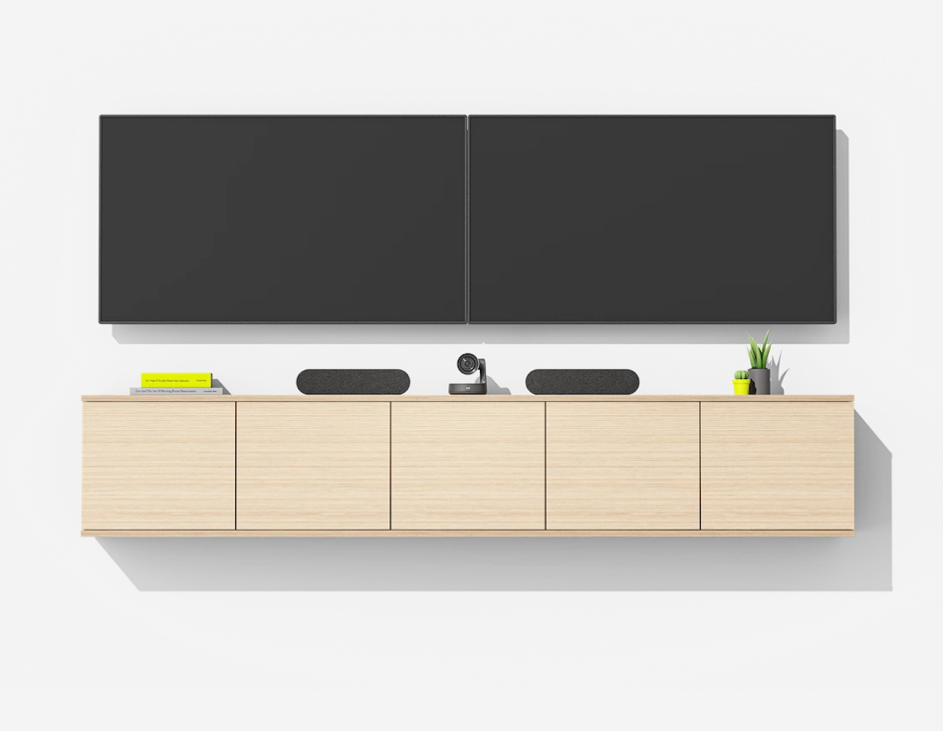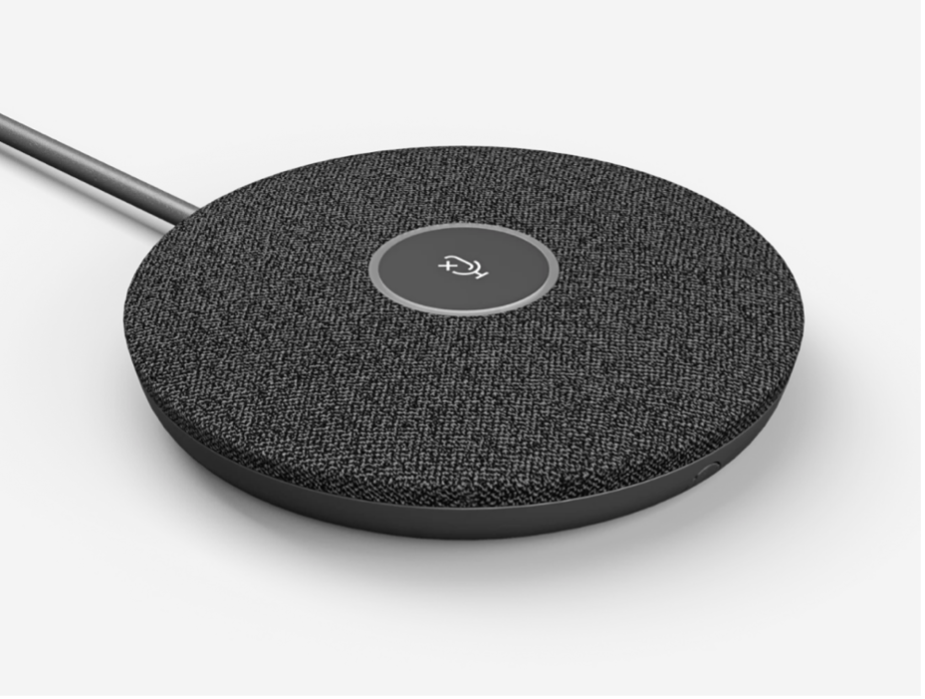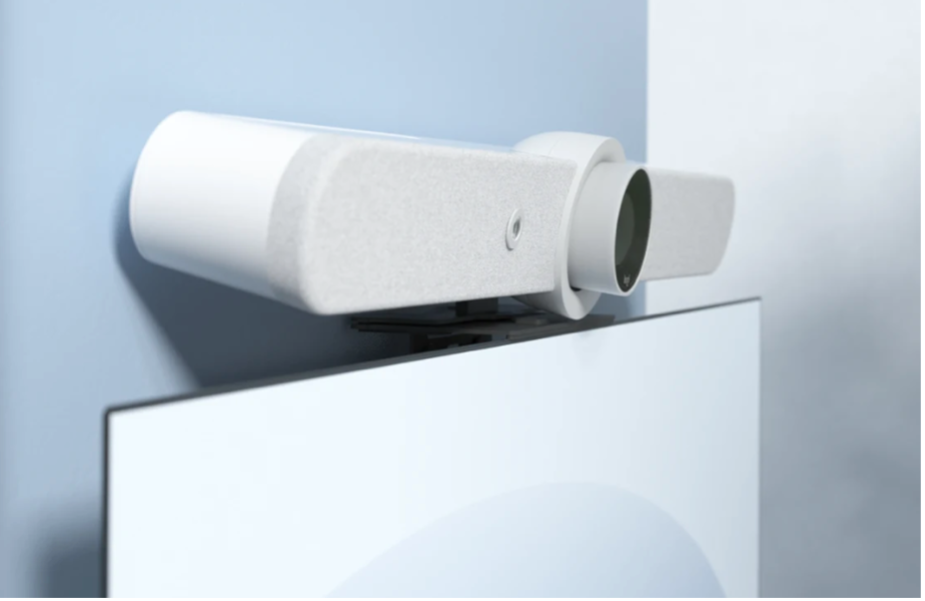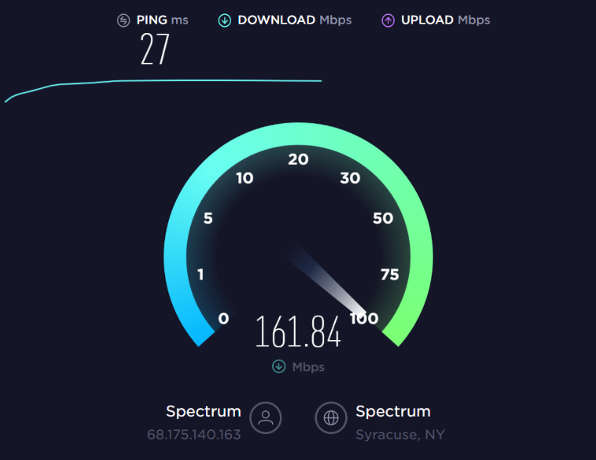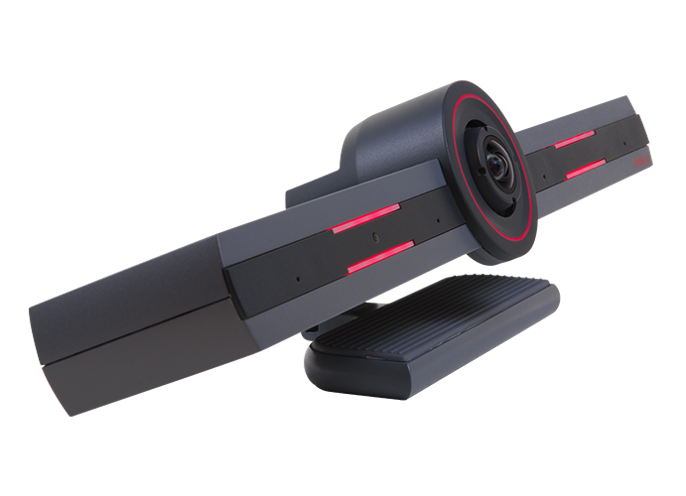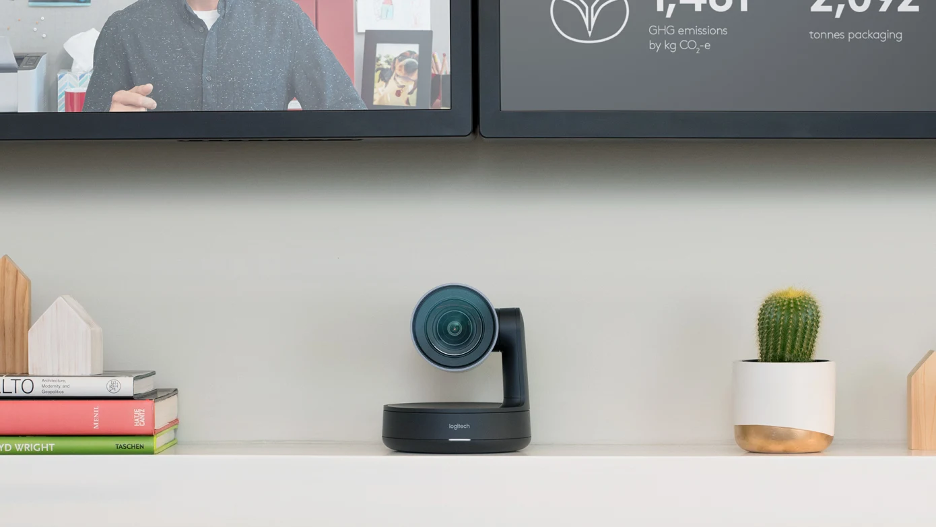Enhancing Virtual Meetings: Conference Room AV Set-Up Tips
While meetings and conferences are part and parcel of any corporate business, the pandemic has significantly influenced how we conduct them. Bain & Company, a global consultancy firm, reports that organizations spend nearly 15% of their collective time in conference rooms, and that percentage is increasing.
Video conferencing and innovative conference room equipment have made communication much more efficient today, but real communication is often limited by the capabilities of the devices used in the process.
Difficulty connecting to a display, launching video calls, or switching presenters during virtual meetings can waste time and productivity. Around 15% of time spent in an hour-long meeting is wasted, primarily due to inefficient conference room equipment – that's 9 minutes of your precious time lost!
Your conference room AV (Audio-Visual) setup needs to be reliable, consistent, and streamlined, but that doesn't mean it has to be complicated.
This article discusses AV technology and how optimizing your AV setup can help you make the most of your conference room equipment, allowing meeting participants to feel more engaged and productive.
What is AV Technology, and Why is it Essential for Your Conference Room?
AV stands for Audio Visual and refers to the vast range of digital audio and video devices for communication and collaboration. Companies of all sizes use this technology for meetings, presentations, teleconferencing, video conferencing and much more.
Video conferencing technologies have many advantages for any business, particularly since the global adoption of hybrid working. Thanks to constantly evolving AV technology, conference rooms can now be anywhere at any time with as many participants as needed.
Hybrid working paired with video conferencing has the potential to revolutionize how companies operate and how employees work - it can facilitate brainstorming sessions, screen sharing, meeting room analytics and interactive whiteboard capabilities so remote workers can have the same experience as those in the office.
To break it down further, the right conference room AV equipment can enrich workplace culture and add value to your organization by:
Boosting Collaboration
Conference room technology has made a world of difference to collaboration. Before modern AV technology, large conference rooms were the norm and would meet the need for gathering staff and invited participants. Nowadays, conference rooms are no longer confined to one primary static space with fixed hardware and devices.
A robust technology infrastructure often necessitates centralized storage, meaning that files can be accessed anywhere to be used by audio-visual technology throughout an office. Additionally, the phrase 'huddle room' is a common part of office vernacular, describing smaller collaborative spaces equipped with AV tools and most often used for informal, on-the-fly meetings that help combine the best remote and on-site workflows.
When you invest in the right conference room equipment, you're investing in the tools to enhance efficiencies and collaboration within your team.
Promoting Flexibility
The advent of hybrid working and high expectations from end-users has led to innovation in AV equipment. This has enabled greater workplace flexibility than ever before.
Employees can BYOD (Bring Your Own Devices) to meetings and use a variety of multimedia such as infographics, videos, and interactive graphs to convey their key points. Conference room equipment is becoming more and more compatible with users' personal devices, easier to install and a pleasure to interact with.
Employees who can communicate and share ideas using their preferred form of communication in meetings are more motivated and effective, so it's essential that your meeting room AV equipment can support these goals.
What are the Main Components of an AV System?
Here's what an AV system typically consists of:
Displays and Screens: Screens are the visual part of your conference room's audio-visual system, and it's one of your main collaboration tools. They display much larger and clearer information than a laptop or tablet, making it easy to participate in presentations. Additionally, they allow you to see colleagues in other locations, view presentations, and screen share from laptops, tablets and smartphones.
Microphones and Speakers: These are important considerations for effective, high-quality video conferencing. These can be either in-ceiling or on-table.
Camera: Cameras capture video from one endpoint and distribute it to other endpoints connected to the conference. They can vary in size – usually smaller ones are found in a huddle room and something more sophisticated ones in larger spaces.
Connection: To share information on the display, do searches, and access other internet content, you'll need to have the components of your AV system connected to the internet either through Wi-Fi or an Ethernet connection.
Video Conferencing Software: Without video conferencing software, you won’t be able to communicate with other parties virtually. In addition to the more commonly known platforms such as Zoom or Microsoft Teams, we recommend using Avaya Spaces for companies searching for global reach and greater reliability.
How Can You Make the Most Out of Your AV System?
While AV technology is enabling hot-desking, flextime, and all manners of remote and hybrid working, organizations must spend time setting up and configuring conference room components correctly for the technology to work effectively.
Camera and video equipment need to work properly for everyone; wireless connections need to be stable, and software and hardware like video display screens, sound bars and microphone systems should be fully supported.
There are several components to meeting room equipment that enable relationship-building on a deeper level. When configured and optimized properly, these components can serve as a cost-saving tool by reducing travel expenses and enabling virtual meetings with participants worldwide at any time.
To make the most out of your collaborative efforts and maximize your efficiency, here are a few key pieces of conference room audio-visual technology and their best practices:
Audio-Visual Best Practices and Tips
1. Displays and Screens
Single displays are a go-to choice for many small conference rooms while dual displays are a popular option, especially for companies with high meeting frequency.
With a single screen you will likely have 'picture in picture view'. This means you would have to choose between seeing the content being shared or the other participants in the video call in the large view. Content is often chosen to be shown on the large portion of the screen, as it typically drives the meeting's conversation. The rest is displayed in a small square at the bottom of the screen, which can take away from one of the main benefits of video conferencing - seeing people.
Dual displays offer a solution to the picture-in-picture view. Meeting attendees see the content being presented and the other video participants on separate full-size screens. Instead of choosing between content and team members, you can see both. This promotes collaboration by allowing participants to see nuances such as facial expressions during the presentation.
2. Microphones and Speakers
A Sound Bar is a type of loudspeaker that comes in a long, narrow rectangular shape with a wide and low enclosure. From an acoustical perspective, the best sound results are achieved by having the sound bar mounted below display screens.
With multiple speakers within one sound bar cabinet, it generates high-quality audio with surround sound effects. Soundbars are a cost-effective alternative to stereo sound systems that can drastically improve the audio quality in your meeting room.
Low-quality microphones and speakers will significantly impact the overall conferencing experience. The right setup can reduce conference participants' echo, feedback and other noises.
3. Camera
One of the most important pieces of equipment in a conference room is the camera.
You might want to consider a camera with a 180-degree viewing angle, depending on your furniture configuration. Huddle rooms are usually small, collaborative spaces with chairs and tables pushed close to the display and camera. If the camera's viewing angle is too narrow, those sitting closest to the display will be left out of the field of view.
Pan-tilt-zoom cameras are common in larger conference rooms. A variety of manufacturers such as Logitech offer these types of cameras. The type of video conferencing platforms your organization uses may dictate the type of camera needed.
4. Connection
Wireless internet connectivity is essential for modern businesses. Your technology needs to be convenient for employees to use. Unfortunately, some Wi-Fi signals are spotty or weak, making streaming video difficult.
For these rare instances, it's good to have a backup plan to ensure timelines don't get pushed back and nothing has to be rescheduled. Ideally, your conference room AV solution should include Wi-Fi and Ethernet capability, so you can have a secure, hard-wired connection when necessary.
5. Video-Conferencing Software
A feature-rich video conferencing solution can empower your teams to be productive regardless of location. Some key features to look for are:
Screen sharing: You want to share your entire screen and individual apps on your desktop during a meeting. This makes it easier for video conference participants to follow presentations.
Multiple webcam sharing capabilities: Consider dynamic webcam features if your company has many remote workers or regularly holds meetings with employees on the go. To ensure everyone can see and understand each other during meetings, your video conferencing solution should accommodate multiple webcams.
VoIP: For remote teams, communicating with video should be as easy as connecting by phone or chat. When your video conferencing tool is integrated with a Voice over Internet Protocol (VoIP) package, users can easily switch between voice calls, video calls or group meetings just by the push of a button. There's no need to establish a new connection or pause communication to change channels or add participants.
Chat features: Whether it's a marketing webinar or an employee meeting, the more interaction your users have with your content and each other, the more they'll benefit from it. This is why a robust chat feature is so useful.
Unlimited recording: To get the most out of your video meetings and presentations, you'll want to be able to record them. While most video conferencing platforms allow you to record, you should look for a platform that allows for unlimited cloud storage and easy sharing.
Dynamic presentation features: For complex presentations, you'll want to have certain features to rely on. Make sure you can upload various file types, including MP4 videos, PPTs, and PDFs. This allows you to add rich media to the presentation to keep your participants' attention.
Performance Reports: With a platform that provides both attendance and chat reports, you can get adequate feedback from your meetings and webinars for future use.
An impressive example is Avaya Spaces, a cloud-based team collaboration and meeting application that brings your team together like never before. Avaya Spaces is simple and effective at managing tasks, tracking communications, etc. Since this is a cloud-based application, you can access it on the go without being tied to your office. Whether your team includes office workers, work-at-home professionals, or road warriors, this feature-rich, user-friendly application can keep you all connected.
How Cabco Can Help
As you can see from this article, your company can't afford to be behind the curve regarding its video conferencing AV setup. If you want to boost productivity, save time, reduce travel expenses, and promote collaboration within your team, you'll need a solution in place.
Our team at Cabco can help you integrate video conferencing with audio-visual displays or projectors, sound systems, document cameras and more to optimize and simplify your user experience. Contact CABCO to improve the way your team collaborates by clicking here.
Ahona Saha
Marketing Assistant
Cabco


